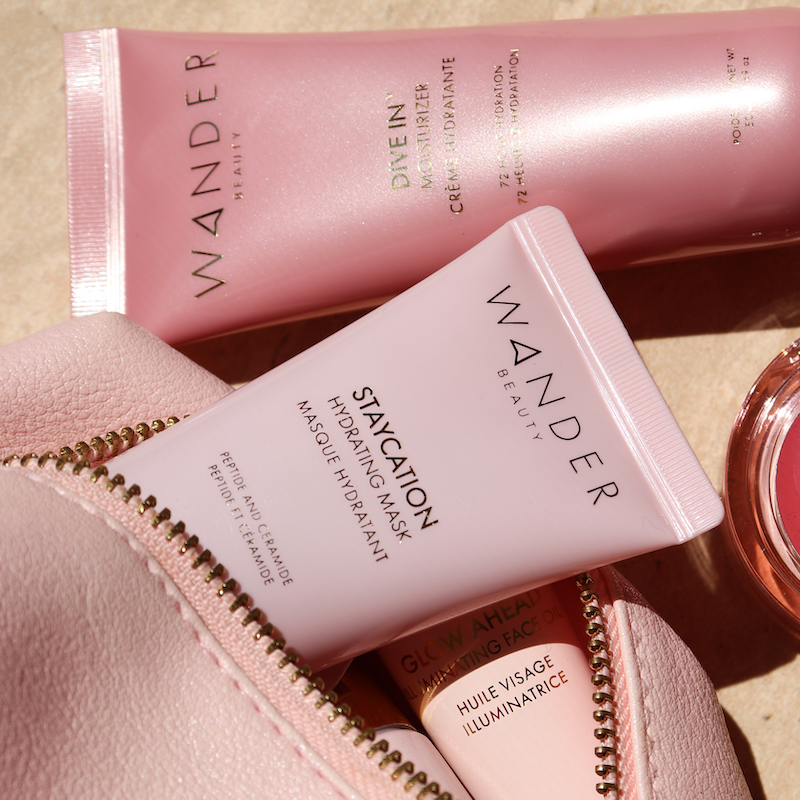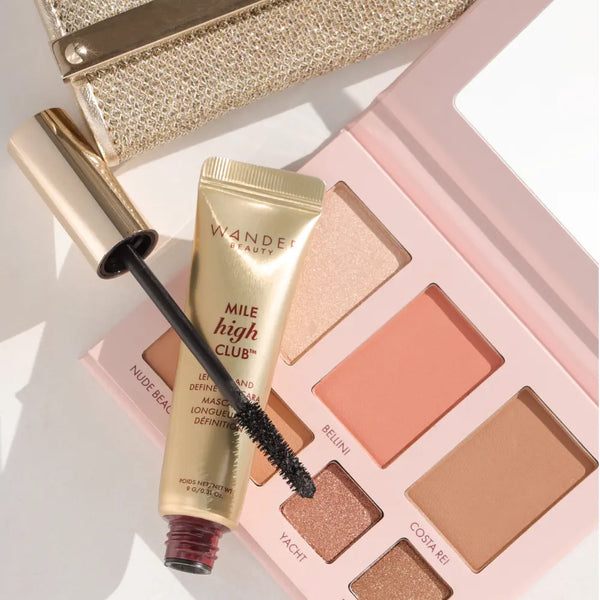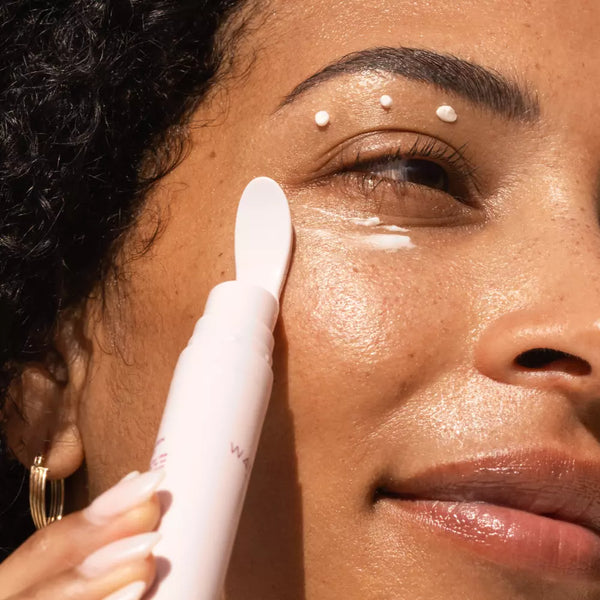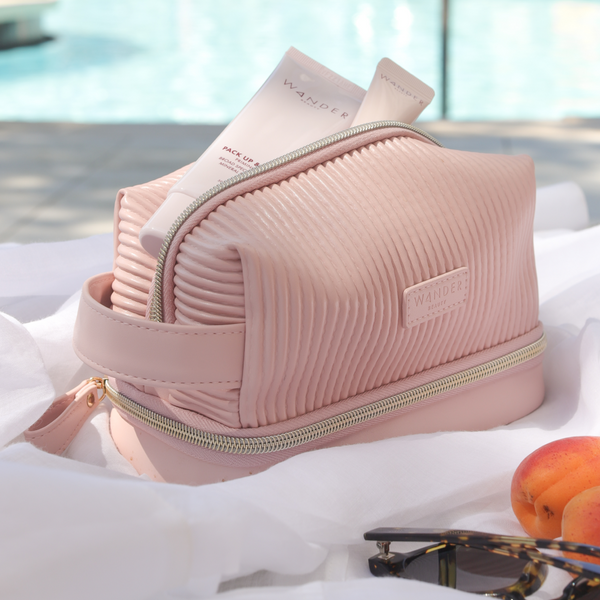Humectants vs. Emollients vs. Occlusives - What Is The Difference?
By Cassidy Best | May 22, 2020
For some of you (myself included - science terms tend to freak me out), even the title of this blog post is intimidating! But don’t fear, Team Wander is here! Today we’re getting into the science behind our moisturizers, which type is right for you, and how to find them. We’re breaking down everything you need to know about humectants, emollients, and occlusives. Put on your lab coat and read on!
Humectants
What are they?
Humectants counteract dry skin by extracting water from the air (and your water-based moisturizer) and pulling it into the skin’s surface. Once they attract the water, they lock it in. This prevents water loss and keeps your skin hydrated. Humectants also help pull water to the surface of your skin, keep your skin glowing and radiant.
Who Should Use?
Everyone! No matter your skin type, it's key to keep skin properly hydrated.
Also Known As:
You won’t find “humectant” on product labels so look for the following ingredients: Glycerin, Hyaluronic acid, Propylene glycol, Butylene glycol, Sodium PCA, Sorbitol, Allantoin, and Lactic acid.
Where can I find at Wander Beauty?
Dive In Moisturizer's water-based formula contains humectants such as glycerin, panthenol, and sodium hyaluronate. These attract water like a magnet, leaving skin plump and hydrated. Dive In is also enriched with pentavitin which binds to water and creates a moisture barrier, providing up to 72 hours of deep hydration. You can also find humectants in Baggage Claim Eye Masks. They're formulated with hyaluronic acid to add a boost of hydration to the skin and to diminish the appearance of fine lines and wrinkles.
Emollients
What are they?
Though emollients come in many forms, they all do the same thing: they soften, smooth, and condition skin by filling in the gaps between cells and skin flakes. Additionally, they increase the rate of skin barrier restoration to help repair any damage caused by sun exposure, environmental aggressors, harsh products, and more. Basically, emollients help replenish the damage to your skin barrier that happens over time.
Who Should Use?
Emollients are great for anti-aging and repairing skin. So if you struggle with age/sun spots, acne scars, or just want to keep your skin looking youthful and vibrant, these are for you!
Also Known As:
Lipids and oils, colloidal oatmeal, shea butter and isopropyl palmitate.
Where can I find at Wander Beauty?
Humectants and emollients go hand in hand. Dive In Moisturizer contains both humectant and emollient ingredients to not only hydrate skin, but also to provide smoothing and nourishing benefits.
Occlusives
What Are they?
Essentially, occlusives are like plastic wrap for your skincare routine. They seal everything in, including humectants and emollients, to keep skin hydrated and soft throughout the day. Occlusives create a protective barrier on the skin to prevent the loss of moisture. Think of this as applying a thick shield to lock in hydration and defend against outside toxins.
Who Should Use?
Those who struggle with constantly dry skin. After doing your skincare routine, adding in this barrier step will help lock moisture in and keep toxins out.
Also Known As:
The most commonly used occlusive is petroleum jelly.
Where can I find at Wander Beauty?
Glow Ahead Face Oil is the perfect last step to your skincare routine to seal in all your hard work! The formula features a blend of eight beauty oils, including raspberry seed oil, evening primrose oil, castor seed oil, camellia japonica seed oil, and meadowfoam seed oil, which all work together to restore skin's youthful glow. When it comes to oils, it's important to note that they can function as both emollients and occlusives, but never as a humectant. Oils can lock in hydration but cannot produce it.
Class is dismissed! You're now all caught up on the difference between humectants, emollients, and occlusives!
What humectants, emollients, and occlusives do you have in your routine? Let us know @Wander_Beauty!
Humectants vs. Emollients vs. Occlusives - What Is The Difference?

For some of you (myself included - science terms tend to freak me out), even the title of this blog post is intimidating! But don’t fear, Team Wander is here! Today we’re getting into the science behind our moisturizers, which type is right for you, and how to find them. We’re breaking down everything you need to know about humectants, emollients, and occlusives. Put on your lab coat and read on!
Humectants
What are they?
Humectants counteract dry skin by extracting water from the air (and your water-based moisturizer) and pulling it into the skin’s surface. Once they attract the water, they lock it in. This prevents water loss and keeps your skin hydrated. Humectants also help pull water to the surface of your skin, keep your skin glowing and radiant.
Who Should Use?
Everyone! No matter your skin type, it's key to keep skin properly hydrated.
Also Known As:
You won’t find “humectant” on product labels so look for the following ingredients: Glycerin, Hyaluronic acid, Propylene glycol, Butylene glycol, Sodium PCA, Sorbitol, Allantoin, and Lactic acid.
Where can I find at Wander Beauty?
Dive In Moisturizer's water-based formula contains humectants such as glycerin, panthenol, and sodium hyaluronate. These attract water like a magnet, leaving skin plump and hydrated. Dive In is also enriched with pentavitin which binds to water and creates a moisture barrier, providing up to 72 hours of deep hydration. You can also find humectants in Baggage Claim Eye Masks. They're formulated with hyaluronic acid to add a boost of hydration to the skin and to diminish the appearance of fine lines and wrinkles.
Emollients
What are they?
Though emollients come in many forms, they all do the same thing: they soften, smooth, and condition skin by filling in the gaps between cells and skin flakes. Additionally, they increase the rate of skin barrier restoration to help repair any damage caused by sun exposure, environmental aggressors, harsh products, and more. Basically, emollients help replenish the damage to your skin barrier that happens over time.
Who Should Use?
Emollients are great for anti-aging and repairing skin. So if you struggle with age/sun spots, acne scars, or just want to keep your skin looking youthful and vibrant, these are for you!
Also Known As:
Lipids and oils, colloidal oatmeal, shea butter and isopropyl palmitate.
Where can I find at Wander Beauty?
Humectants and emollients go hand in hand. Dive In Moisturizer contains both humectant and emollient ingredients to not only hydrate skin, but also to provide smoothing and nourishing benefits.
Occlusives
What Are they?
Essentially, occlusives are like plastic wrap for your skincare routine. They seal everything in, including humectants and emollients, to keep skin hydrated and soft throughout the day. Occlusives create a protective barrier on the skin to prevent the loss of moisture. Think of this as applying a thick shield to lock in hydration and defend against outside toxins.
Who Should Use?
Those who struggle with constantly dry skin. After doing your skincare routine, adding in this barrier step will help lock moisture in and keep toxins out.
Also Known As:
The most commonly used occlusive is petroleum jelly.
Where can I find at Wander Beauty?
Glow Ahead Face Oil is the perfect last step to your skincare routine to seal in all your hard work! The formula features a blend of eight beauty oils, including raspberry seed oil, evening primrose oil, castor seed oil, camellia japonica seed oil, and meadowfoam seed oil, which all work together to restore skin's youthful glow. When it comes to oils, it's important to note that they can function as both emollients and occlusives, but never as a humectant. Oils can lock in hydration but cannot produce it.
Class is dismissed! You're now all caught up on the difference between humectants, emollients, and occlusives!
What humectants, emollients, and occlusives do you have in your routine? Let us know @Wander_Beauty!











